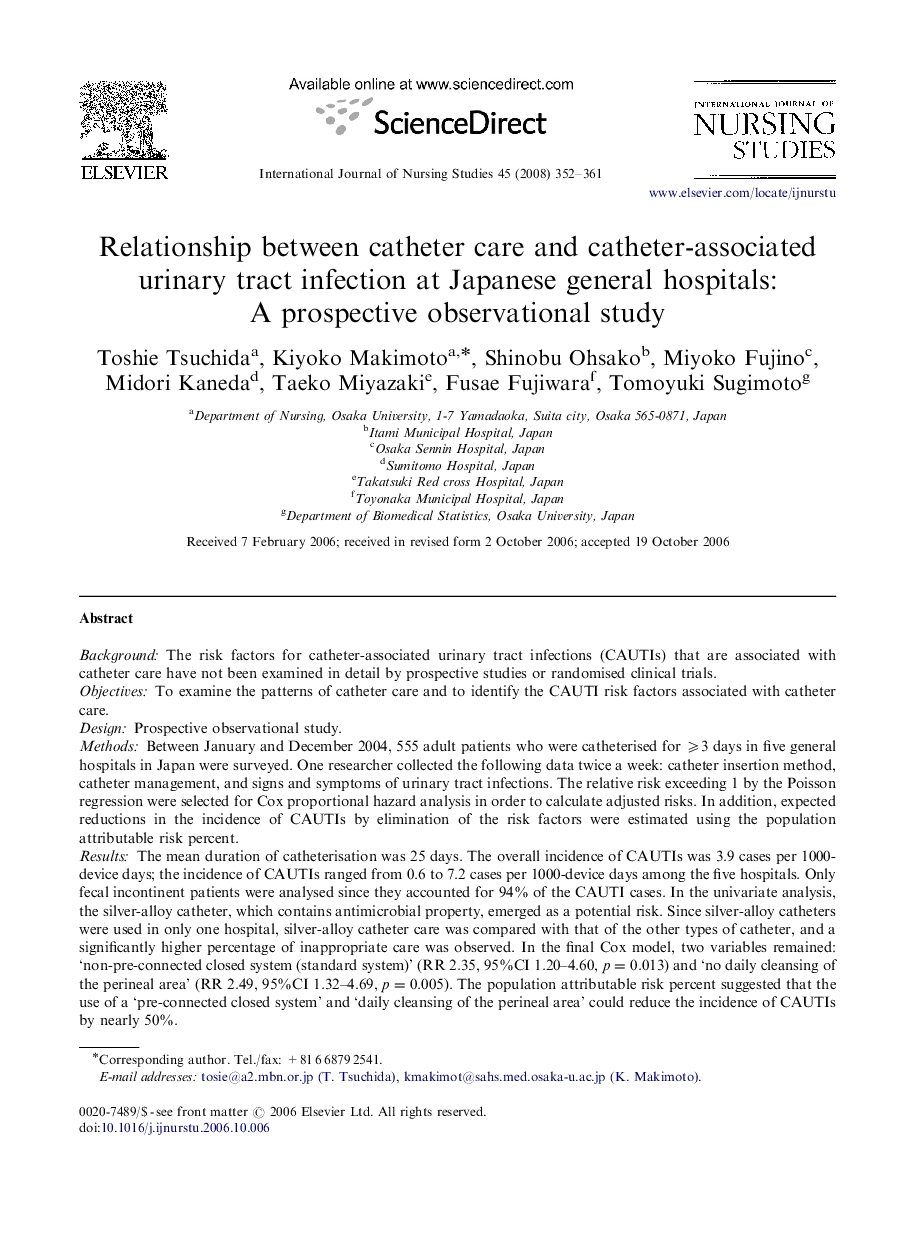| کد مقاله | کد نشریه | سال انتشار | مقاله انگلیسی | نسخه تمام متن |
|---|---|---|---|---|
| 1076914 | 1486610 | 2008 | 10 صفحه PDF | دانلود رایگان |

BackgroundThe risk factors for catheter-associated urinary tract infections (CAUTIs) that are associated with catheter care have not been examined in detail by prospective studies or randomised clinical trials.ObjectivesTo examine the patterns of catheter care and to identify the CAUTI risk factors associated with catheter care.DesignProspective observational study.MethodsBetween January and December 2004, 555 adult patients who were catheterised for ⩾3 days in five general hospitals in Japan were surveyed. One researcher collected the following data twice a week: catheter insertion method, catheter management, and signs and symptoms of urinary tract infections. The relative risk exceeding 1 by the Poisson regression were selected for Cox proportional hazard analysis in order to calculate adjusted risks. In addition, expected reductions in the incidence of CAUTIs by elimination of the risk factors were estimated using the population attributable risk percent.ResultsThe mean duration of catheterisation was 25 days. The overall incidence of CAUTIs was 3.9 cases per 1000-device days; the incidence of CAUTIs ranged from 0.6 to 7.2 cases per 1000-device days among the five hospitals. Only fecal incontinent patients were analysed since they accounted for 94% of the CAUTI cases. In the univariate analysis, the silver-alloy catheter, which contains antimicrobial property, emerged as a potential risk. Since silver-alloy catheters were used in only one hospital, silver-alloy catheter care was compared with that of the other types of catheter, and a significantly higher percentage of inappropriate care was observed. In the final Cox model, two variables remained: ‘non-pre-connected closed system (standard system)’ (RR 2.35, 95%CI 1.20–4.60, p=0.013) and ‘no daily cleansing of the perineal area’ (RR 2.49, 95%CI 1.32–4.69, p=0.005). The population attributable risk percent suggested that the use of a ‘pre-connected closed system’ and ‘daily cleansing of the perineal area’ could reduce the incidence of CAUTIs by nearly 50%.ConclusionsOur investigation identified fecal incontinence as the major risk factor for CAUTIs in the study population. However, attributable risk percent indicates that the implementation of two basic elements of catheter care could reduce CAUTIs by nearly 50%. The hospital using silver-alloy catheters had the highest CAUTI rates, strongly suggesting the hazards of relying on the antimicrobial property of silver and the resultant laxity in care.
Journal: International Journal of Nursing Studies - Volume 45, Issue 3, March 2008, Pages 352–361